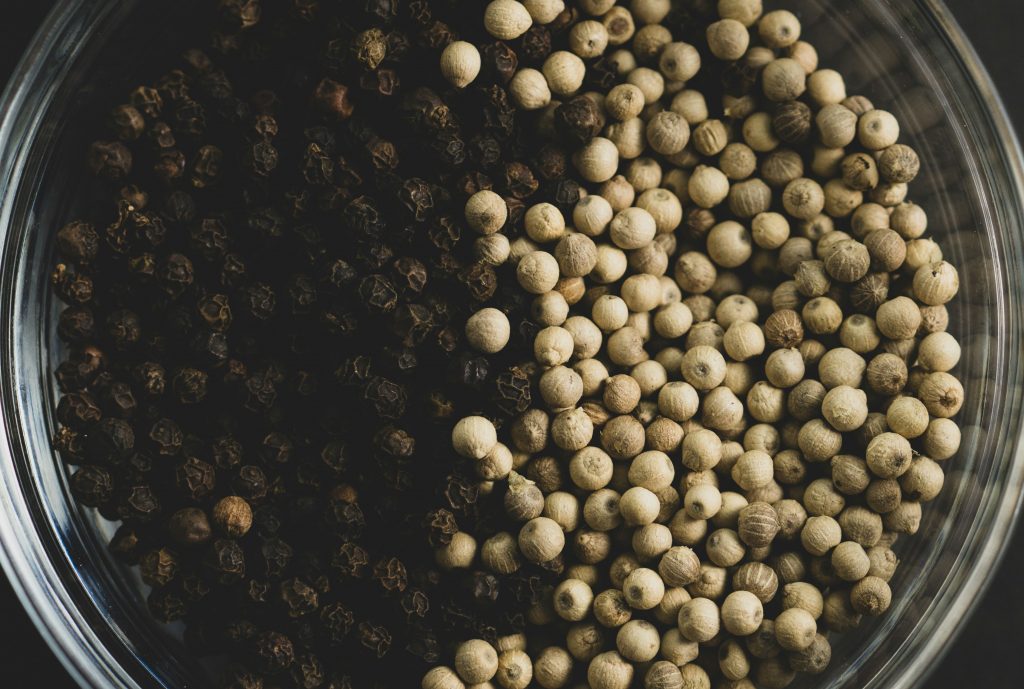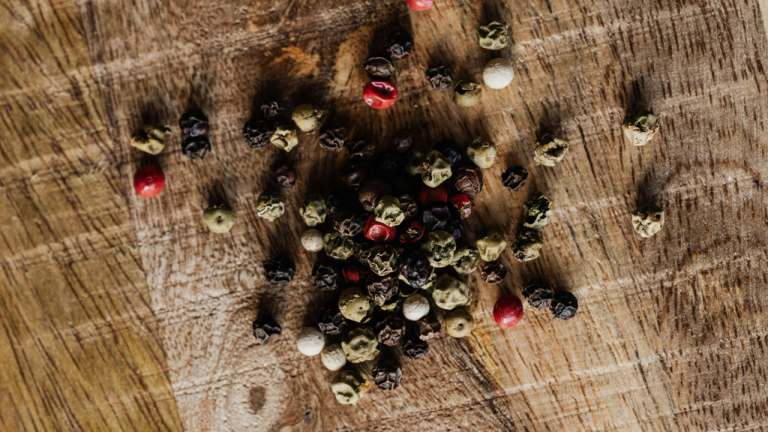If you’ve ever paused mid-cooking and wondered, ‘What’s the difference between black and white pepper?’ you’re not alone.
While they come from the same plant, these two spices are quite distinct in taste, appearance, and uses. Let’s discuss the unique qualities of each and how to make the most of them in your cooking.
Black pepper
Black pepper is made from unripe pepper berries, which are picked just before they reach full maturity. They’re dried under the sun, which turns the skin dark and gives them their signature deep, wrinkled appearance.
Black pepper is known for its bold, complex flavour profile—a rich blend of warmth, slight bitterness, and an earthy depth. It’s versatile and fits into almost any dish, from spicing up a steak to adding a kick to your morning scrambled eggs.
Beyond its taste, cracked black pepper makes a visual statement, especially on creamy soups and light salads. If you love seeing those little black flecks on your plate, black pepper is your go-to.
Read more: Easy tips for grilling bell peppers

White pepper
White pepper comes from the same berries but is harvested once they’re fully ripe. After picking, the outer red skin is removed, revealing the greenish seed beneath. These seeds are then dried until they turn a pale, almost ivory shade. The result? A pepper with a sharper, more straightforward heat. While black pepper has a rounded, robust flavour, white pepper is punchy and a little more intense.
White pepper’s subtle, earthy notes make it perfect for dishes where you want the flavour without the visible specks. Think creamy sauces, mashed potatoes, or light-coloured soups where aesthetics matter. It’s also a common choice in many Asian cuisines, where its distinct taste brings out the best in traditional recipes.
Grinding for freshness
Both black and white pepper are at their most fragrant and flavourful when freshly ground. The oils locked inside each peppercorn release when ground, filling your dish with that unmistakable peppery aroma. This is why chefs often opt for whole peppercorns that they can grind right before use.
Types of Pepper grinds
- Whole peppercorns: Ideal for grinding as needed. Whole black or white peppercorns can be cracked to your preference, offering bursts of fresh, potent flavour. These are perfect for seasoning soups, stocks, and marinades.
- Cracked pepper: The coarser option for those who want a robust texture and heat. Black cracked pepper, in particular, is great on salads and meat rubs.
- Coarse grind: A notch smaller than cracked, this grind still delivers a textured bite but with a more refined look. It brings out more aroma and intense flavour.
- Medium and fine: These smaller grinds mix smoothly into recipes, ideal for baking or as table condiments. While less intense than coarser varieties, they’re convenient and blend seamlessly into sauces and dressings.
Choosing the right pepper for your dish
As a rule of thumb, use black pepper for a more well-rounded spice kick and visible garnish. White pepper, with its cleaner, hotter profile, is best when you want the taste without the colour. Whichever you choose, remember that freshly ground is always king when it comes to taste.
So, the next time you reach for that pepper grinder, you’ll know exactly which to pick and why!
ALSO SEE: Tips for deseeding bell peppers
Feature image: Pexels

